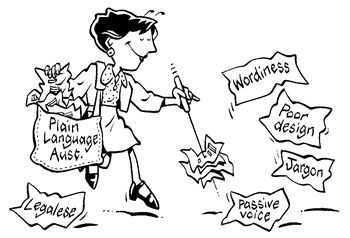Language is often something that we take for granted. We make assumptions about the way people communicate and fall back on our own preferred communication styles naturally. Yet, the use of language is important when it comes to user experience and our own styles may not make the grade for our users.
A Rule of Thumb – Plain English is Best
A rule of thumb, is a rule that can be called on in most situations. You see not everyone uses English the way I do and idiom, particularly for English as a Second Language speaker, can’t be assumed to be the same around the world. I used to work for a spectacularly clever Swedish chap who spoke an awful lot of languages fluently but he regularly mangled the idiom in English and would resort to translating Swedish idiom to replace it. It wasn’t a huge problem but it often required an explanation after it had been delivered.
If you keep your English simple, and you explain terms that people may be unfamiliar with, you are going to find that it’s easy to relate to your content.

Another area where you need to provide explanations for is industry jargon (I like to think I’m pretty good with language but if you want to talk the technical details of floristry – then I need a primer on what the words mean because I don’t know anything about floristry) and industry acronyms (acronyms are abbreviate forms of multiple words – they are very handy as a shortcut but only if the person you’re communicating with understands them).

Simple English is a good way to reach a global audience. It’s a good way to ensure that those who aren’t as proficient with the language aren’t left behind.
However, Keep Your Audience in Mind
Your audience still matters. Simple English is great for a lot of purposes and it sucks for others. If your audience consists of academics then you may need to go much more flowery in your use of language. There is a bizarre insistence in academia and particularly in arts and social science subjects on using 20 words where one would do the job just fine. This probably stems from a need to hit word counts on projects, theses, etc. and because it sounds clever (even if it’s not very clever to exclude a huge chunk of your potential audience from being able to read your ideas).

Then there are top level industry professionals. They’re not going to be happy if your language is all based around explaining basic principles when they’re looking for detailed and in depth information in their field.
Yes, Plain English works well in many situations but not in all situations. It’s always a good idea to test the language you use with your users before you unleash it on the world around you.
Header Image: Author/Copyright holder: Unknown. Copyright terms and licence: Unknown. Img
Image Source:
PRSA (link to image)
Harrington Starr (link to image)
Plain Language Australia (link to image)
Joe Gerstandt (link to image)











